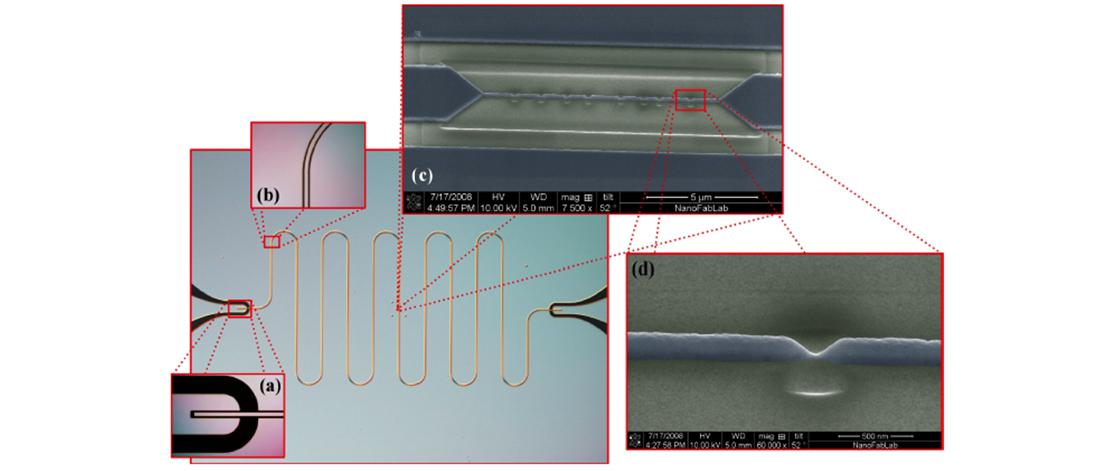Superconducting Quantum Circuits

Superconducting microwave resonators have very low internal losses and we can design their nonlinearity by placing a small weak link or Josephson junction at an anti-node of current. The nonlinearity can be very strong, so that significant intermodulation is possible, even with very few microwave photons in the resonator. We have studied parametric amplification [1] in weak-link resonators, and we are currently looking at noise-correlations in these structures.
We also study Josephson junction chains, or series arrays of Josephson junction SQUIDs, where the nonlinearity can be tuned with an external magnetic flux. We have studied the superconductor-insulator transition [2] and Coulomb blockade. When the quantum fluctuations of the phase become very large, the ground state of the chain is characterized by a state with definite number of Cooper pairs. In this insulating regime, the condensate exhibits an interesting Charge solition [3], dual to the Josephson flux solition.
Find our recent publications at this .
Links to PhD theses and associated publications:
, , , , ,
References:
[1] Parametric amplification with weak-link nonlinearity in superconducting microresonators. E. Tholén, A. Ergül, K. Stannigel, C. Hutter and D. B. Haviland. Physica Scripta T137, 014019 (2009).
[2] Superconducting and Insulating Behavior in One-Dimensional Josephson Junction Arrays, D. B. Haviland, K. Andersson and P. Ågren. Jour. Low. Temp. Phys., 118, 733 (2000).
[3] Cooper Pair charge solitions: The electrodynamics of localized charge in a superconductor. D. B. Haviland and P. Delsing, Phys. Rev. B., 54, R6857 (1996).

